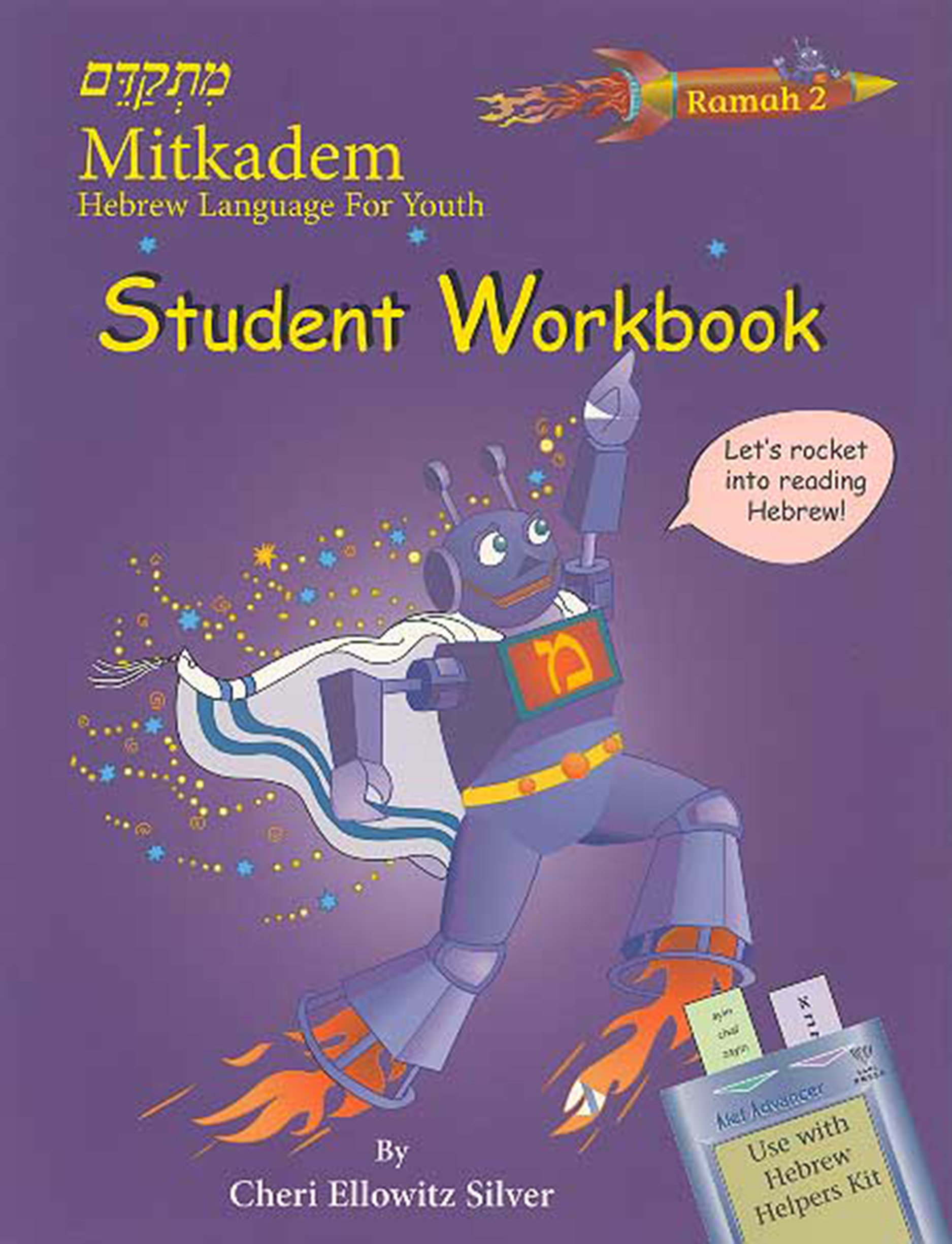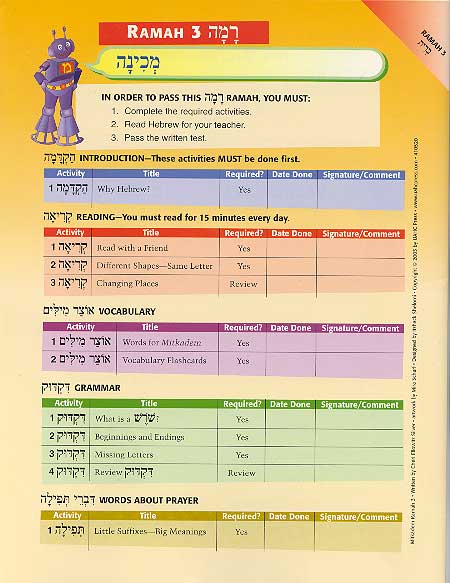- Home
- Play & Learn Home
- Online Enrichment
- Experience Modern Israel
- Israel It's Complicated
- Jewish and Me
- Jewish Holidays Jewish Values
- Jewish Values in Genesis and Jewish Values in Exodus
- Min Ha’aretz
- Our Place in the Universe
- Simply Seder
- The Prophets: Speaking Out for Justice
- Making T'filah Meaningful
- Make, Create, Celebrate
- Yom Haatzmaut Resources
- Hebrew Apps
- About The OLC
- What is the OLC?
- Introduction
- Get Started
- Resources
- OLC Content
- Parent Materials
- See My OLC Classes
- Store
Mitkadem
Testimonials:
Find out how Mitkadem transformed Hebrew learning in this school.
Ringing in Success with Mitkadem: An Up-Close Look at Making Independent Hebrew Learning Work
---
 Individualized, self-paced Hebrew prayer learning, for students of different learning styles and abilities.
Individualized, self-paced Hebrew prayer learning, for students of different learning styles and abilities.
Mitkadem is a self-paced Hebrew prayer and ritual program designed to empower every child to learn Hebrew. Created with an understanding of the realities of supplementary Jewish education (limited time, inconsistent student attendance, different levels of Hebrew knowledge, levels of motivation, and involvement with Jewish practice), Mitkadem is part of a comprehensive approach to Hebrew education.
The Mitkadem program consists of 23 levels that introduce grammar, vocabulary and reading. Students who prefer to work alone may do so, while others might be more interested in practicing reading with a partner.
HOW IT WORKS:
The first two units (called “ramot”) focus on the fundamentals of Hebrew reading by developing decoding skills and ritual vocabulary. Ramot 1 and 2 are teacher-directed, with a combination of independent study and group work, and are designed for students in grades 2-4 who are beginning Hebrew study. They begin to teach independent learning, the foundation of the 21 ramot that follow.
Ramah 3 introduces students to the Mitkadem system and to a self-paced, self-directed Hebrew learning program.
Ramot 4-23 each cover a particular prayer or family of prayers that share a theme. Students complete each packet individually or in small groups. Students generally can complete between three and six packets per year, depending on number of school hours and students’ pace. As students successfully complete a packet (and pass both an oral and written assessment), they advance to the next.
 BENEFITS:
BENEFITS:
- Lets each student engage with the material at his or her own level and pace.
- Frees teacher time by eliminating class review of material for students who miss a lesson or learn at a slower pace.
- Motivated and knowledgeable students can proceed quickly through the material.
- Students can pick up where they left off. No need for them to feel left behind or make self-conscious comparisons to their peers.
- Diminished behavior problems because students are occupied at their own level.
- Students cannot “fall through the cracks,” because of constant monitoring and regular assessments.
FEATURES:
Different from traditional textbooks, every ramah includes several booklets with five categories of activities:
- Hakdamah – Introductory activities that set the stage for the theme of each prayer and related activities. These serve as an “advanced organizer” for the unit and must be completed before moving to the remaining activities.
- K’riah – Reading activities that drill decoding skills, fluent reading of the prayer, and if appropriate, chanting of the prayer.
- Otzar Milim – Vocabulary activities drill key words and important phrases found within the prayer.
- Dikduk – Grammar activities teach and have students use roots, prefixes, and suffixes found within the prayer.
- Divrei T’filah – Activities emphasize concepts and critical thinking skills. In this section, students delve into the theological and philosophical ideology expressed in Jewish liturgy.

